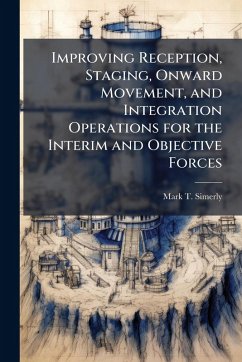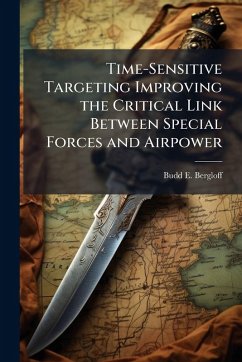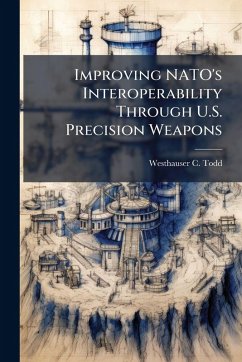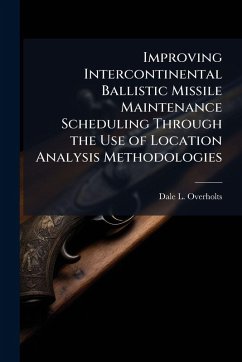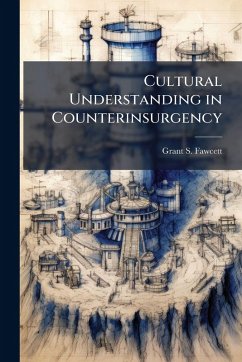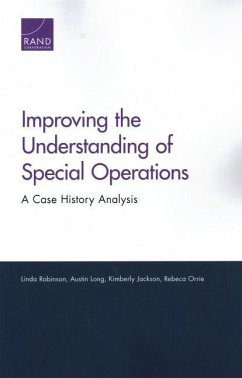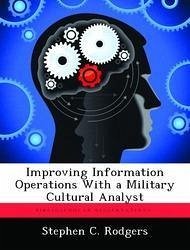
Improving Information Operations With a Military Cultural Analyst
Versandkostenfrei!
Versandfertig in über 4 Wochen
14,99 €
inkl. MwSt.

PAYBACK Punkte
7 °P sammeln!
The concept and practice of using information as a tool in military operations to support political objectives has gained increased notoriety and emphasis within U.S. political and military arenas over the course of the last decade. Two particular publications of 2001, the Quadrennial Defense Review Report (QDR) and the United States Army Field Manual 3-0, Operations, highlight this fundamental shift in the growing importance of using information in warfare. Of particular importance, the 2001QDR mandated that information operations be treated not merely as an enabling function, but as a core c...
The concept and practice of using information as a tool in military operations to support political objectives has gained increased notoriety and emphasis within U.S. political and military arenas over the course of the last decade. Two particular publications of 2001, the Quadrennial Defense Review Report (QDR) and the United States Army Field Manual 3-0, Operations, highlight this fundamental shift in the growing importance of using information in warfare. Of particular importance, the 2001QDR mandated that information operations be treated not merely as an enabling function, but as a core capability of future forces. Recent military operations conducted during Operation Iraqi Freedom (OIF), however, indicate that the application of this newly christened element of combat power has fallen well short of desired effectiveness. While OIF produced stunningly rapid and decisive tactical and operational military successes it has yet to produce the post-conflict environment that was envisioned prior to the onset of hostilities. This, however, should not come as a surprise. The Army has spent the past three decades honing its lethal capabilities - the last half of which without a peer military competitor - at its combat training centers, gunnery ranges and simulation exercises. Yet this unmitigated focus on purely lethal means of influence has left the Army lacking the knowledge, skills, and trained personnel to shape the operational environment with non-lethal means such as information operations. Without comprehensive changes in training, equipment distribution and personnel management, the Army will continue to struggle to employ information operations and fail to achieve the directives of the 2001 QDR. More importantly, the Army will continue to send soldiers into regions that could have been made far less dangerous with effective information operations. Fortunately, the Army has begun several studies in an effort to make the necessary changes to improve information This work has been selected by scholars as being culturally important, and is part of the knowledge base of civilization as we know it. This work was reproduced from the original artifact, and remains as true to the original work as possible. Therefore, you will see the original copyright references, library stamps (as most of these works have been housed in our most important libraries around the world), and other notations in the work. This work is in the public domain in the United States of America, and possibly other nations. Within the United States, you may freely copy and distribute this work, as no entity (individual or corporate) has a copyright on the body of the work. As a reproduction of a historical artifact, this work may contain missing or blurred pages, poor pictures, errant marks, etc. Scholars believe, and we concur, that this work is important enough to be preserved, reproduced, and made generally available to the public. We appreciate your support of the preservation process, and thank you for being an important part of keeping this knowledge alive and relevant.




